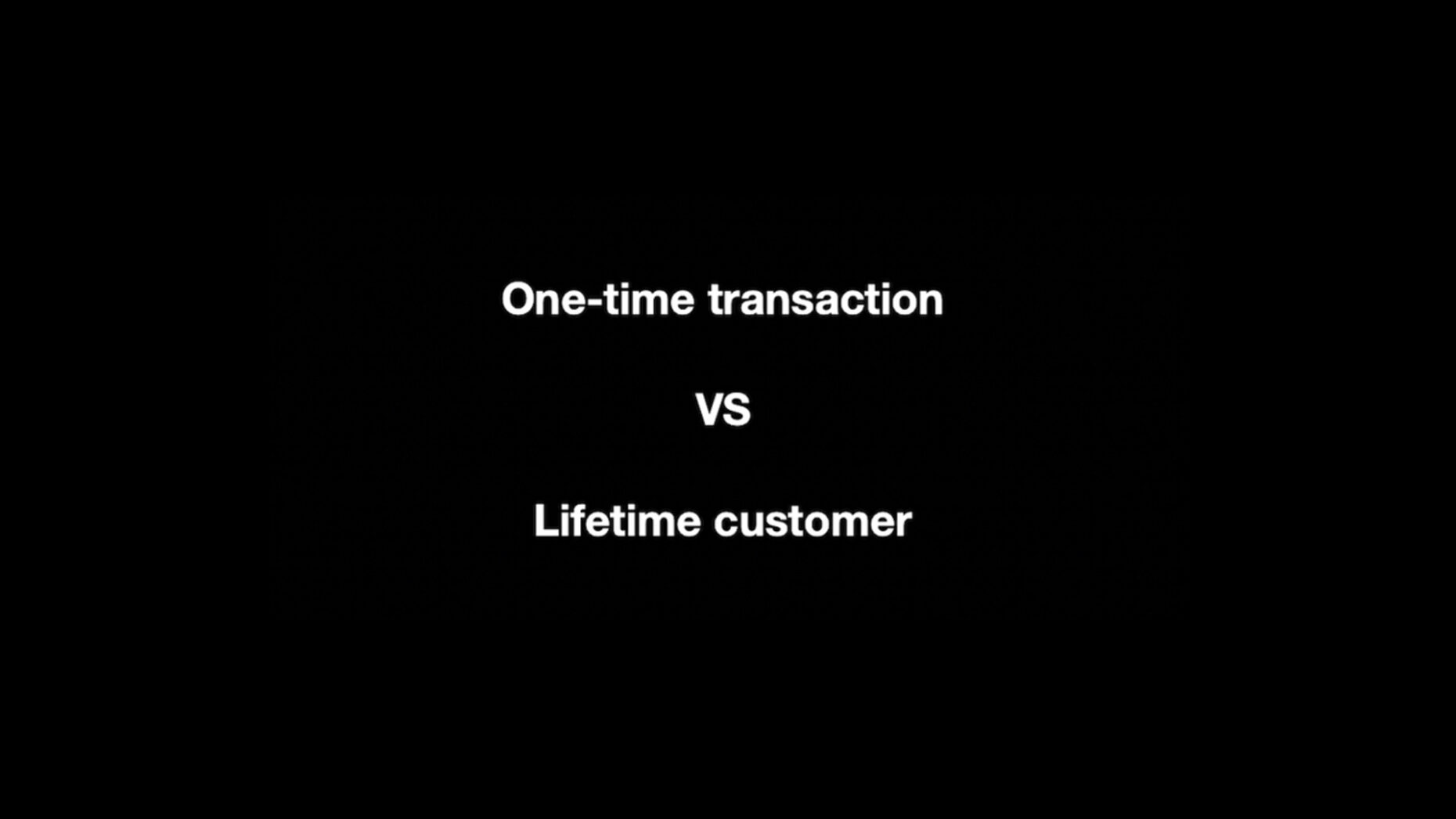When legions of customers don’t like and distrust the conventional car buying process and those customers that do buy, many don’t return to their selling dealer thereafter, what is our great industry missing? Missing in the sense of both exceeding a customer’s expectations and missing in the lifetime value of its customers. It’s critical for the health and growth of our industry to connect the disconnected parts of the dealer-customer ownership journey together, overcoming the overwhelming negative customer sentiment that clearly exists and propelling Your Dealer Experience beyond the one-time transaction. To look at this from today’s customers’ perspective, it’s easy to find significant clues from the world’s most successful retailer, Amazon.

Amazon isn’t a trillion dollar plus valued company because it can sell something one-time. Amazon is the titan of retailing because they’ve continuously evolved and are consistently delivering the desired customer engagement before and AFTER the product sale, that keeps their customers organically coming back again and again. Without the recurring customer, Amazon isn’t nearly the juggernaut they are today. Many in the auto retailing industry don’t like the Amazon comparison. However, Amazon is chock full of brick-n-mortar and people to deliver its products and services, no different then the auto retailing industry. The only difference is purpose driven mission and process. That’s all.
So a sobering question…is it the auto retailing industry’s mission to only sell a car and maybe a couple of F&I products or to also earn a recurring customer? Ask anyone. They’ll clearly say the latter is true or desired. However actions, processes and leadership speak louder than words if anyone in the auto retailing industry desires anything more than the one-time transaction. The auto retailing industry is great at selling cars (whether there is inventory or not), but inspiring the recurring customers thereafter is eroding.
It’s partially an architectural problem, where most dealers operate sales and service like two separate companies operating under one dealer roof. Many times sales and service don’t even like each other. From the customers’ perspective, when the sales process has completed, the transaction and therefore the relationship is typically over. The dealer sold the customer a vehicle and the customer purchased it…done. Consider the evolution of the sales process with digital retailing (DR). Although DR is a healthy customer acquisition advancement to cast a wider sales net, the associated digital experience with DR abruptly ends before the vehicle sale. What does that say to the customer? It further substantiates the sale and therefore the relationship has concluded with the vehicle purchase.
The auto retailing industry also throws the kitchen sink at the one-time F&I sales process but then what? When F&I service is needed, a service advisor has to figure out what their own dealership sold their customer, typically navigate a 1-800 number, phone queue with call hold wait times (of any length is not desired) and wade through manual claim processing…different for each F&I third party administrator.
The auto retailing industry throws the kitchen sink at customer acquisition to sell more cars, where a customer’s experience and the ownership lifecycle too often take a back seat. Don’t agree? Take a look at any dealers’ website. What percentage of their website is dedicated to selling a car vs anything thereafter? The auto retailing industry wants to be a relationship business, however it’s actions and processes primarily say it’s a one-time transaction business.
Still don’t agree? Let’s look at one of the largest financial work centers in every auto dealer, F&I. If F&I revenue is so critically important to a dealers’, the F&I agents’ and the third party administrators’ financial success plus it’s added value to enhancing a customers’ ownership experience and it’s direct linkage to increasing the customers’ loyalty back to their selling dealer, why does the auto retailing industry and it’s support community leave all that financial and relationship value to the micro moment of the F&I menu presentation alone? See a trend? Missing a process beyond the one-time transaction? Even when post vehicle purchase F&I sales is considered, phone solutions, junk mail and unsupported service advisors are the disconnected from reality attempts that fail more often than the succeed. In order for a service advisor to be able to offer customers F&I products, the service advisor needs to be intelligently equipped with the knowledge of what F&I products (if any) the customer has already purchased, even when multiple third party administrators exist. Let’s be honest, what percentage of the time does a service advisor learn about what’s being sold in F&I for the first time when a customer is standing in front of them requesting service from it? Worse yet, when a customer (that has never read their service contract or warranty) rolls into the service drive unannounced and says, “I bought my vehicle here and I think some protection too. I need service support”. The ill equipped service advisor says, “What protection products did you buy from us? Do you have your agreement with you? Do you know what it’s called?” The customer replies or thinks (it’s the same relationship damage either way), “I bought this stuff from you. Don’t you know?!”
The auto retailing industry also throws the kitchen sink at the one-time F&I sales process but then what? When F&I service is needed, a service advisor has to figure out what their own dealership sold their customer, typically navigate a 1-800 number, phone queue with call hold wait times (of any length is not desired) and wade through manual claim processing…different for each F&I third party administrator. Even if a F&I third party administrator thinks they are advanced, they may have a (fill-in-all-the-blanks) online claim form that always leads to a phone call anyway or an app that only supports certain F&I products from only one administrator where almost every dealer has multiple F&I administrators fueling it’s F&I environment. In 2022, shouldn’t a customer and a service advisor (on behalf of their customers) be able to see all the F&I products a customer purchased in one digital view on their smart device or computer, even if those products are powered by multiple administrators? It that same frictionless engagement environment, shouldn’t there be a simplified digital pathway to F&I service when needed? Finally, if a customer or service advisor could easily see and engage all the customer’s purchased F&I products in one digital view then wouldn’t it make sense for all the F&I products the customer didn’t purchase with their vehicle be visible in the same place, so they could be explored and purchased beyond the one-time transaction? The modern smartphone was released in 2007. Shouldn’t our great industry start to embrace and leverage it, so dealers can connect with their customers the way customers desire to connect?
The disconnected trend continues with the dealers’ own stated mission. How many dealers have a clearly defined “why buy here” proposition? The answer is every single dealer. By stark contrast, how many dealers have a clearly stated and consistently practiced, “why return here” value proposition? The answer is awkward silence from most. If our industry is going to play the long game, focused on the lifetime value of its customers, the different stages of the dealer-customer ownership experience (before and AFTER the vehicle sale) can not feel like disconnect pieces.

The auto sales industry is a great industry. Not everything is wrong. Separately, F&I administrators and their professional agents provide a very valuable solution to help their dealers create more revenue. Our industry can and should continuously refine it’s sales and service process to exceed a customers’ expectations. However, the one-time transaction mindset must be replaced with the lifetime customer value mindset for our great industry to achieve it’s maximum results.
- Digital lifecycle transcends digital retailing.
- Connected customers transcends connected cars.
- Ownership experience transcends car buying experience.
The very essence that separates the brick-n-mortar dealers from the 100% only online retailers, is the brick-n-mortar dealers’ unique ability to also locally service their customers better than anyone. Shouldn’t the sales process plus the service process feel like one unified mission and ownership experience together where customers organically return to their selling dealer again and again?
Everything is always changing. Today change seems faster than ever. In 2022 and beyond, you’re either part of the solution or part of the disconnected from reality problem that is holding our great industry back from its fullest potential. Would FixedOps and therefor the whole dealer greatly financially benefit from capturing missed F&I sales beyond the micro moment of the F&I menu presentation alone and additionally improve employee and customer experience with an intelligent processes to champion F&I service when needed, especially in the light of reduced ROs from EVs and other prevailing competitive winds? Should the frictionless dealer-customer journey be limited to selling a car or should that just be the beginning? To catapult forward, waiting for a customer to return needs to be replaced with inspiring a customer to embrace that buying a vehicle is the beginning of the dealer-customer relationship…not the conclusion. Enhancing Your Dealer Experience beyond the one-time vehicle transaction is just a leadership decision and a simple process enhancement away. The successful blue print and the solution already exists. Ready?
